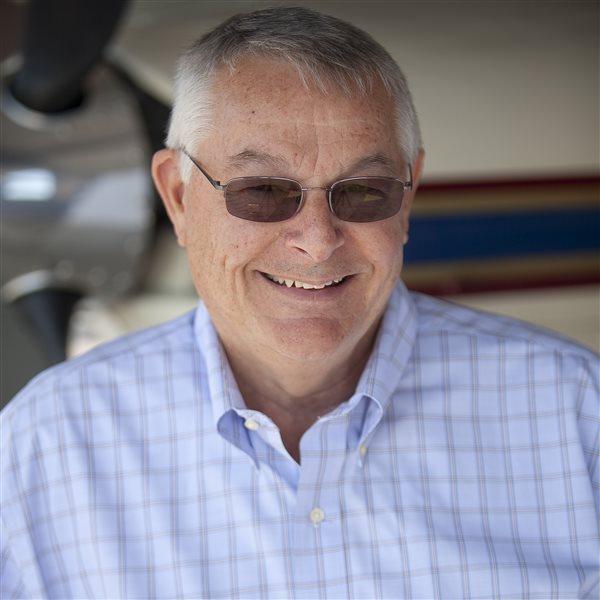Charlotte Kelley's list of accomplishments during her career in aviation takes up eight single-spaced typed pages of her résumé, and still she is not satisfied. It isn't that she wants more glory. There's been plenty of that.
She has been honored by four past FAA administrators and two presidents, including one she knew better as her former neighbor, Jack, known to the rest of us as the late President John F. Kennedy.
"I already know this one," Kennedy joked in the White House Rose Garden during ceremonies where he honored 13 women helicopter pilots on May 4, 1961. "You do this, too?" an astonished president asked.
People less famous have been saying that to Kelley for a long time. At the time she was the first woman state aeronautics commissioner in the United States, serving in Massachusetts from 1956 to 1966. Prior to that she had made a name for herself in aviation.
The only way into the sky in 1945, it seemed, was to become a stewardess for American Airlines, but she took flying lessons on her days off. She soloed at Leicester Airport, Massachusetts, in 1945, and by 1955 she had added seaplane, instrument, multiengine, helicopter/rotorcraft, and balloon ratings, as well as a commercial certificate.
The military services came to Kelley in the 1950s to help with recruiting. If mothers and wives could see this diminutive mother of two tackling the fastest and biggest aircraft, the reasoning went, they would more readily support husbands, sons, and brothers who wanted a military career. So she became the first woman to pilot a United States T-33 during a flight with General Charles Sweeney of the Massachusetts National Guard. Sweeney flew the aircraft that dropped an atomic bomb on Nagasaki, Japan. Kelley was also the first woman to pilot the largest blimp the Navy had at the time of her flight in 1955, a 343-foot-long early warning ZPG-2 (Germany had built airships over 700 feet long 20 years earlier) and the first civilian woman to break the sound barrier in a U. S. jet by diving a Lockheed F-94 Starfire fighter (which evolved from the T-33) over Bedford Air Force Base in Lawrence, Massachusetts. In 1963, Kelley said, she was the first helicopter-rated woman pilot to fly the Lockheed-Hughes rigid-rotor experimental helicopter. It was a prototype for the military Cheyenne helicopter.
She first competed as a member of the U.S. Helicopter World Championship Team in 1973. The team, competing in England, placed sixth overall. The next competition, in 1978, was her most memorable. The competition took place in Vitebsk, Russia, a city not usually open to foreigners. The team flew in a German transport that also carried their fully fueled helicopters. Not realizing that they were to be escorted by Russian MiGs, the team was frightened when four of the aircraft appeared suddenly around their aircraft. "I thought we had bought the farm," Kelley remembers. She went to the championships twice more, racking up another first when she became the first woman judge for any country in 1984. She was called away from the competition field in Castle Ashby, England, to meet with Sarah Ferguson, then still married to Prince Andrew. Ferguson sought advice on becoming a pilot and, not long after, obtained her fixed-wing and rotary-wing licenses.
Kelley has devoted equal passion to fixed-wing and helicopter flying. She competed in fixed-wing air races from 1969 to 1972, winning three races and placing in the top 10 in "quite a few." Her split aviation personality continues to this day, and she keeps current in a friend's Beech A36 Bonanza. Another friend operates a helicopter maintenance facility, and Kelley is the one who gets to fly various models of Bell helicopters as they emerge from 50- and 100-hour inspections. She has a daughter who likes horses better than airplanes, and a son who as a boy earned his own money for flying lessons but now works as an attorney.
Quite a full career, and a complete life, it would seem, so why is she still looking for more to accomplish?
Under a program sponsored by the Whirly Girls (the organization for female helicopter pilots, of which she is member number 21, having joined in 1955), she is developing new scholarships for young women who need a break to enter the largely man's world of helicopter flying. While there are several awards given (see " Pilot Briefing," September 1996 Pilot), one of them includes paying for all training through helicopter flight instructor and goes on to guarantee employment for a period after training is completed. There is sponsorship for only one such scholarship at present.
"Two more scholarships like that, and I can rest," this aviation overachiever said.



